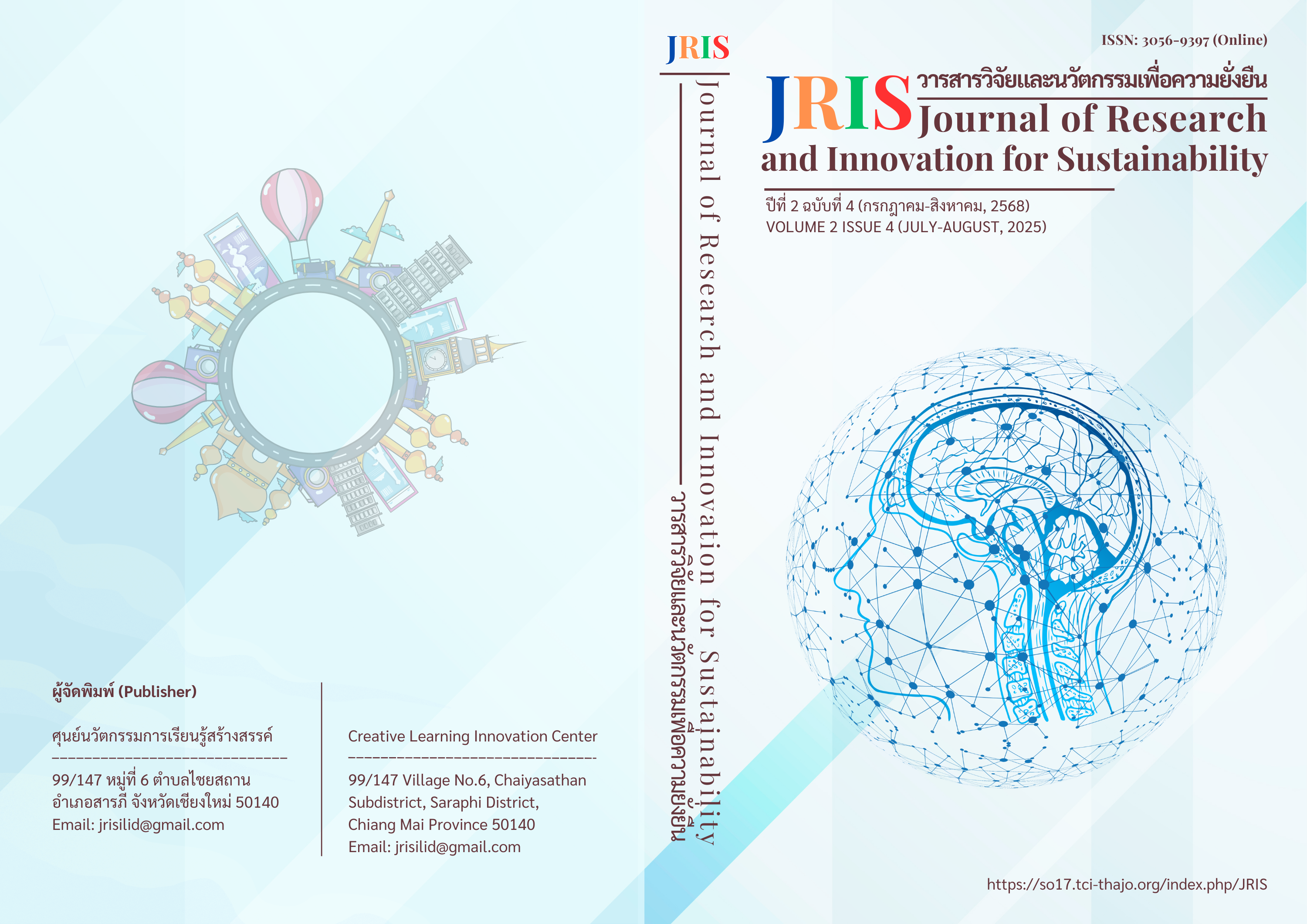THE DEVELOPMENT OF INSTRUCTION ACTIVITIES ON COMPUTER NETWORK SUBJECT BY USING CONSTRUCTIVIST THEORY ENHANCING COLLABORATION SKILLS OF UNDERGRADUATE STUDENTS
Main Article Content
Abstract
This research aimed to (1) develop instructional activities for the Computer Network Systems course based on constructivist learning theory to enhance collaborative learning skills among undergraduate students, and (2) examine the learning achievement of students after receiving instruction using these activities. The sample consisted of 60 second-year students majoring in Computer Education at the Faculty of Education and Human Development, Chaiyaphum Rajabhat University in the first semester of the academic year 2024. The students were selected using cluster random sampling from two classrooms, with 30 students per class.
The research instruments included a web-based learning module on computer network systems, a 25-item learning achievement test, and a quality assessment form. The content validity index (IOC) ranged between 0.80–1.00, item difficulty ranged from 0.29–0.79, item discrimination from 0.25–0.58, and the reliability coefficient was 0.91. Data were analyzed using mean (M), standard deviation (SD), and independent samples
t-test.
The findings revealed that (1) the web-based learning module had high quality, with a mean score of 4.71 (SD = 0.38) for content and 4.61 (SD = 0.45) for production technique, and demonstrated instructional efficiency (E1:E2) of 80.83:81.67. (2) The students who received instruction through the developed web-based module showed significantly higher learning achievement than those taught through traditional instruction (M = 20.04 vs. M = 18.17), at the .05 significance level.
Article Details

This work is licensed under a Creative Commons Attribution-NonCommercial-NoDerivatives 4.0 International License.
Copyright License
Permission is granted to use text, content, images, or any other material from the publication for anyone who wishes to read, download, copy, distribute, print, search, or link to the full text of the article, compile data for indexing, transfer data to software, or use for any other legal purposes, provided that it is not used for commercial purposes or for business benefit. All articles published in the Journal of Research and Innovation for Sustainability are distributed under a Creative Commons Attribution-NonCommercial-NoDerivatives 4.0 International License: https://creativecommons.org/licenses/by-nc-nd/4.0/
References
Anderson, L. W., & Krathwohl, D. R. (2001). A taxonomy for learning, teaching, and assessing: A revision of Bloom's taxonomy of educational objectives. Longman.
Best, J. W. (1981). Research in education (4th ed.). Prentice-Hall.
Duffy, T. M., & Cunningham, D. J. (1996). Constructivism: Implications for the design and delivery of instruction. In D. H. Jonassen (Ed.), Handbook of research for educational communications and technology (pp. 170–198). Simon & Schuster Macmillan.
Jonassen, D. H. (1999). Designing constructivist learning environments. In C. M. Reigeluth (Ed.), Instructional design theories and models: A new paradigm of instructional theory (Vol. 2, pp. 215–239). Lawrence Erlbaum Associates.
Pham, H. H., & Ho, T. T. H. (2020). Toward a ‘new normal’ with e-learning in Vietnamese higher education during the post COVID-19 pandemic. Higher Education Research & Development, 39(7), 1327–1331. https://doi.org/10.1080/07294360.2020.1823945
Trilling, B., & Fadel, C. (2009). 21st century skills: Learning for life in our times. Jossey-Bass.
ชัยยงค์ พรหมวงศ์, และคณะ. (2549). การวัดและประเมินผลการเรียนรู้ในระดับการศึกษาขั้นพื้นฐาน. สำนักพิมพ์พัฒนาวิชาการ.
ณัฐกร สงคราม. (2553). การออกแบบและพัฒนามัลติมีเดียเพื่อการเรียนรู้ (พิมพ์ครั้งที่ 1). สำนักพิมพ์แห่งจุฬาลงกรณ์มหาวิทยาลัย.
ณัฐพล ธนเชวงสกุล. (2557). แนวทางการวิเคราะห์คุณภาพของบทเรียนบนเครือข่าย. สำนักพิมพ์แห่งจุฬาลงกรณ์มหาวิทยาลัย.
ทิศนา แขมมณี. (2553). ศาสตร์การสอน: องค์ความรู้เพื่อการจัดการเรียนรู้ที่มีประสิทธิภาพ. สำนักพิมพ์แห่งจุฬาลงกรณ์มหาวิทยาลัย.
ปกเกศ ชนะโยธา. (2551). การศึกษาผลสัมฤทธิ์ ทักษะกระบวนการทางคณิตศาสตร์ และความพึงพอใจของนักเรียนช่วงชั้นที่ 2 โดยใช้บทเรียนคอมพิวเตอร์มัลติมีเดียบนเครือข่ายอินเทอร์เน็ตที่สร้างขึ้นตามทฤษฎีคอนสตรัคติวิสต์ (วิทยานิพนธ์ปริญญามหาบัณฑิต). มหาวิทยาลัยศรีนครินทรวิโรฒ.
ประวิทย์ สิมมาทัน. (2553). การออกแบบและพัฒนามัลติมีเดียเพื่อการเรียนรู้. สำนักพิมพ์แห่งจุฬาลงกรณ์มหาวิทยาลัย.
พิชญ์สินี กิจวานิชขจร. (2562). การจัดการเรียนรู้เพื่อพัฒนาทักษะในศตวรรษที่ 21. วารสารศึกษาศาสตร์ปริทรรศน์, 34(2), 1–13.

